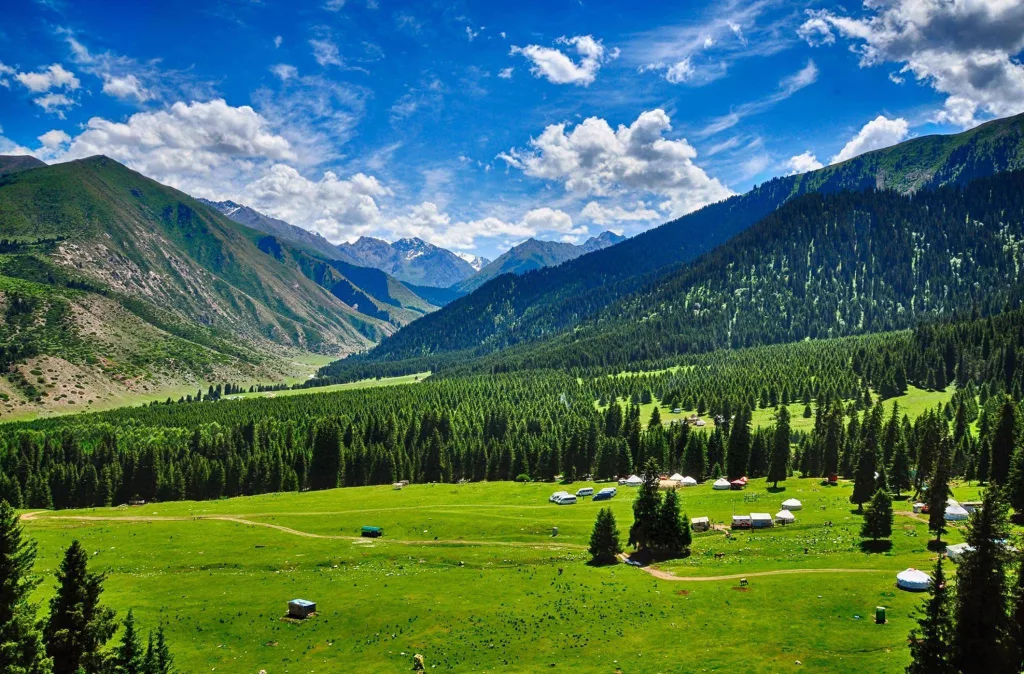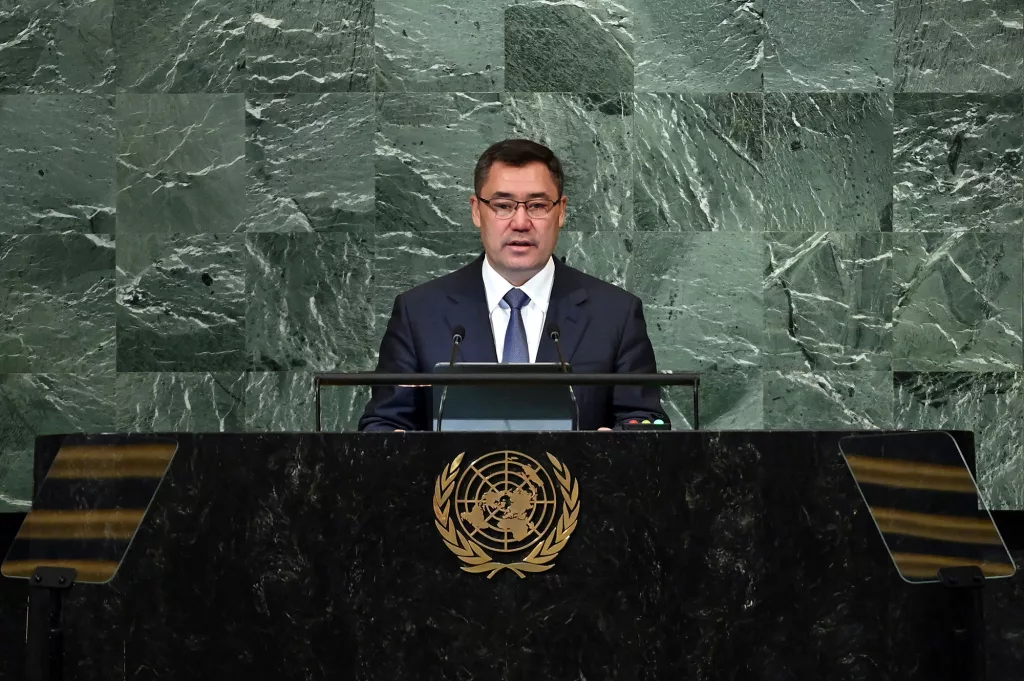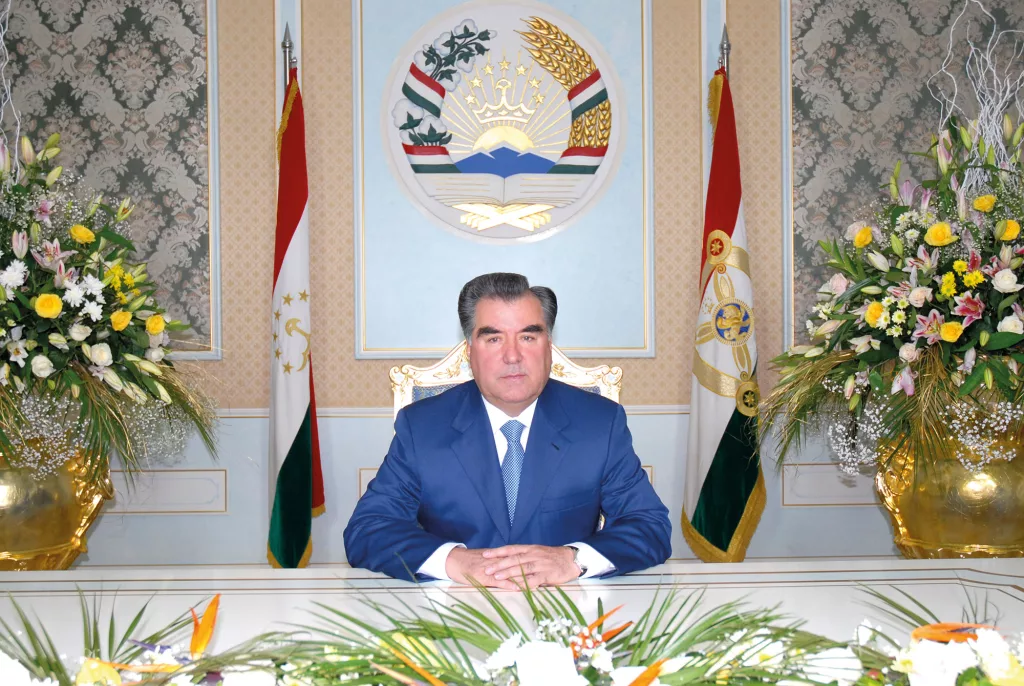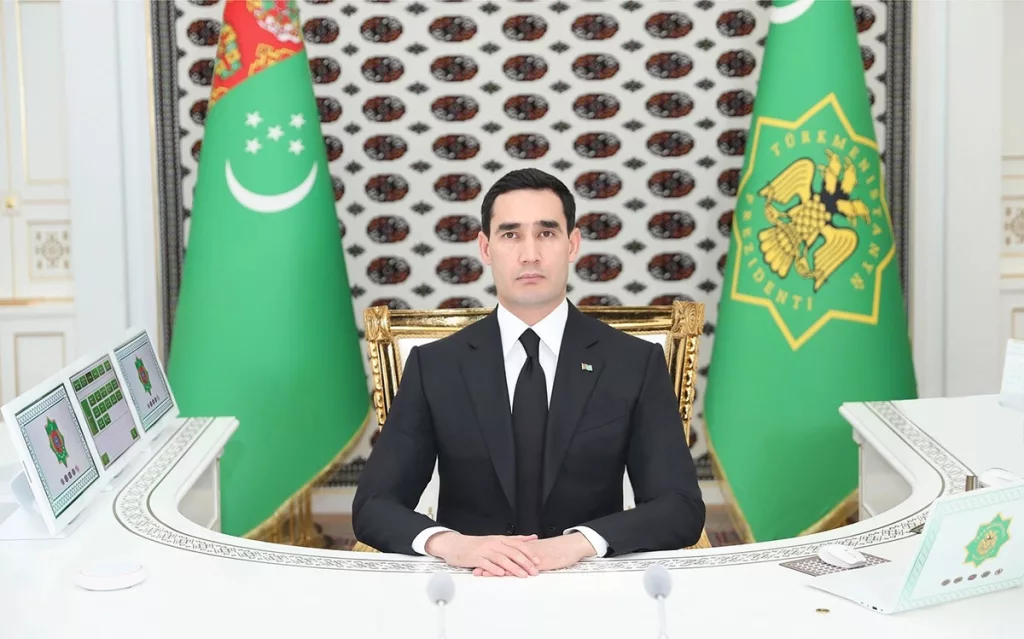Lord Waverley: Tracing the Old Silk Road Shows History Carved a Path to Modern Values — and Vibrant Economies
Lord Waverley continues his journey through Central Asia, a little-known region nestled in a corner of the world that is coming into prominence…
As the Central Asian region continues to develop and integrate into the global community, the three countries — Kyrgyzstan, Tajikistan, and Turkmenistan — will play an increasingly important role in the region, and beyond.

The countries have their unique historical, political, economic, and cultural backgrounds, each bringing a blend of strengths and challenges, offering their own opportunities for trade, investment, and tourism.
Kyrgyzstan
Kyrgyzstan is a mountainous country of seven million people, rich in natural resources and minerals, with high potential for the development of agriculture, hydropower and tourism. The diverse population is highly educated with strong social and civil bonds, and there have been recent improvements in democratic governance. Kyrgyz Republic is a relatively young country making efforts to diversify its economy beyond mining and agriculture. It is home to stunning natural landscapes, such as Lake Issyk-Kul, and cultural landmarks, including the ancient city of Osh.

President of Kyrgyzstan: Sadyr Japarov
Historical Background
The people of Kyrgyzstan are among the most ancient races of Asia. The first mention goes back to the 3rd Century BC, when the empire of the Huns dominated the territory. In 201 BC Mode (Maodun) subjugated Gegun (Kyrgyz), then in the Eastern Tien Shan. The reign of Maodun became an important milestone in history, with the term “Kyrgyz” first mentioned in the Chinese chronicles in 201 BC.
Ancient Kyrgyz was characterised by the creation of the Turkic Khaganate (551-744) in the Altai, and the creation of the Great Kyrgyz Khaganate in the 9th Century. At the end of the 18th and beginning of the 19th Centuries, northern Kyrgyz tribes began to independently establish contact with Russia. After the 1917 Russian October Revolution, the Kara-Kyrgyz Autonomous Region was formed in 1924, and in December 1936 transformed into the Kyrgyz SSR.
In 1991, Kyrgyzstan was one of the first republics to declare independence. The principles of democratic governance began to be introduced, and private forms of ownership were established. In socio-political terms, the republic has acquired all the attributes of statehood and become an equal member of the global community. Kyrgyzstan was the first of the Central Asian countries to introduce a national currency (the Som) in 1993, which allowed the establishment of independent financial and monetary policies. Kyrgyzstan became the first WTO member state among CIS countries in 1998.
Political Background
The first Constitution of independent Kyrgyzstan was adopted in 1993. Kyrgyzstan became a sovereign, unitary democratic republic built on the principles of a legal secular state. One of the main principles of public administration is the division of state power into legislative, executive, and judicial branches.
Currently, Kyrgyzstan is a presidential republic, where a governance structure has been created with a clear distribution of powers, and an effective reporting system. Sadyr Japarov, who came to power after political unrest in October 2020, was elected president in January 2021 — with the support of 80 percent of voters. The last parliamentary elections were held in November 2021.
Trade and Investment
The most difficult test for Kyrgyzstan was the transition to a market economy in the 1990s, when more than half of the population fell below the poverty line and the country’s economy halved. Today, the Kyrgyz Republic is at an important stage in its history, when the prerequisites for the long-term development of the country as a politically stable, economically strong, and socially responsible state have been laid.
Notwithstanding the complex and rapidly changing global, and regional economic and geopolitical situation, digital transformation has covered the main areas of public life and necessitated the formation of a new development model. Kyrgyzstan, landlocked and remote, with limited land transport routes, has had to adapt to new conditions of economic development, considering the small size of its economy. The main trade and economic partners of the country are China, Russia, Central Asian countries, Turkey, and the United Kingdom.
The economy showed resilience in 2022, in the face of tensions in Russian-Ukrainian relations. The republic has significant natural mineral deposits. In the first 10 months of 2022, real GDP grew by seven percent. The surge was driven by gold mining, with a settlement of a dispute between the government and Centerra Gold Inc of Canada. The resolution is considered equitable and recognisant of law, trade, and the development of agriculture and transport infrastructure.
The economic policy of the state is focused on employment, stable incomes, and creating productive jobs. Kyrgyzstan is pursuing reforms to create a competitive digital economy through attractive conditions for entrepreneurs, and the use of innovative and environmentally friendly technologies. The widespread introduction of IT is a priority of the national development policy. The salaries of teachers, doctors, workers in science, culture and civil servants were increased by 100 percent.
New laws and regulations have been aimed at minimising corruption, strengthening competition, preventing the emergence of state monopolies, and increasing the transparency and accountability of the public sector. Digitalisation in the field of tax administration and providing access to income and property declarations of public officials to citizens have become important steps.
The recent meeting of the former presidents of the Kyrgyz Republic, at the initiative of President Sadyr Japarov, has strengthened the unity of the Kyrgyz society and led to a significant improvement in the investment climate.
Foreign Policy
Kyrgyzstan is pursuing a multi-vector foreign policy, establishing the necessary inflow of foreign investment, establishing ties with neighbours and other countries. According to the Foreign Policy Concept, the special role of the Kyrgyz Republic in Central Asia as a bridge between Europe and Asia is emphasised, with the country implementing its foreign policy on the basis of goodwill, mutual understanding, and mutual respect of interests.
Foreign policy priorities include the deepening of integration processes in the region. At the global level, foreign policy is aimed at building confidence in the international community, with the expansion of contacts with countries of the West and the East. It also focuses on the development of interstate co-operation within the framework of international organisations.
Tourism and Culture
This is one of the oldest centres of human civilization. The Kyrgyz, an ethnic group known in Central Asia since the first millennium BC, have brought their identity and culture through the centuries to the present day. The village of Manas, the traditional yurt dwellings, shyrdak and ala kiyiz felt carpets are World Heritage-listed.
The republic is located on the Great Silk Road, along which there are 583 historical and cultural monuments and archaeological sites, some of which (Nevaket, Suyab, Balasagyn, Sulaiman-Too) are of world importance and are also included in the UNESCO World Heritage List.
Kyrgyzstan has a wide range of tourist resources. Some 80 nationalities live in the territory and have preserved their national traditions and customs, handicrafts, and folklore.
The country was the first in Central Asia to abolish visa restrictions for citizens of 60 countries for up to 60 days. It boasts 22 diverse ecosystems, and 160 varieties of mountain and plain landscapes. A full 94 percent of the region is mountainous. Among the famous peaks are Pobeda (7439 m), Lenin (7134 m) and Khan-Tengri (6995 m) — and one of the longest glaciers, Enylchek, is a world landmark. There are 1,923 lakes, the largest of which is Lake Issyk-Kul — one of the deepest alpine lakes in the world. The more than 40,000 rivers are the main source of water. The Kyrgyz Republic is one of 200 priority global ecological regions.
Tajikistan
Tajikistan is home to some of the oldest cities in the world, such as Sarazm. The country has faced challenges of political stability and economic development, but has made great strides in improving its infrastructure, particularly in the energy and transportation sectors. Tajikistan is known for its stunning natural beauty, including the Pamir Mountains and the Iskanderkul Lake.

President of Tajikistan: Emomali Rahmon
Historical Background
Tajikistan has celebrated 30 years of independence. It has been able to establish the foundations of national statehood, and ensure peace, stability, and unity. There is potential for everything from energy to tourism, transport to water management.
With strong GDP growth rates (7.5 percent in 2022), political stability, geo-strategic location, business-friendly environment, youthful population (70 percent are under 35) and significant natural resources, Tajikistan is well placed to achieve continued economic expansion with international partners, including those in Western Europe.
Tajikistan’s rich and colourful history originate from descendants of Bactria and Sogdiana. In the 6th-4th Centuries BC, the areas of Amudarya and Sirdarya were settled by eastern Iranian tribes, and Bactria and Sogdiana were the most ancient states as part of the Achaemenids Empire. After being conquered by the Alexander the Great, the Greco-Bactrian Empire was established.
About 200 years later, the state of Tokharistan was established in Bactria, which with Sogdiana became part of the larger Kushan Kingdom. The Silk Road crossed Tokharistan, with goods delivered to the Greek and Roman Empires. In the 8th Century, Sogdiana and Tokharistan struggled for liberation after Central Asia was conquered by Arabs. At the end of the 9th Century, the Tajik state of Samanid was formed, independently from the Bagdad Caliphate.
In the period of its most extensive growth, Samanid stretched from the deserts of Central Asia to the Gulf, and from the borders of India to Bagdad. During the Samanids Empire, the Tajik people, language and culture became widespread. The Samanids state lived in peace for more than 100 years, which fostered the growth of cities, craft, development of farming and trade and mining. This was an era of renaissance that produced some of the world’s greatest humanitarians, such as the founder of the Persian-Tajik poetry, Rudaki. Internal conflicts and nomadic raids weakened the Samanid state, which in 999 collapsed to Turkic-speaking tribes.
At the beginning of the 13th Century (1219-1221), Central Asia was invaded by Mongols. In the 15th Century, the leader of Uzbek nomad tribes Muhammad Shaibani khan invaded Central Asia. During his rule the state consisted of independent principalities with the largest being Samarkand, Bukhara, and Balkh.
In the 18th Century, a general government was formed after Central Asia was annexed by Russia and Turkestan. Northern Tajikistan and Badakhshan were part of this new territory, and the central and Southern areas (Eastern Bukhara) were left in the ownership of a vassal of the Russian Tsar, the Emir of Bukhara.
In 1920, the first all-Bukhara national assembly was proclaimed, and the Bukhara People’s Soviet Republic was established. In 1924, a new state emerged: the Uzbek Soviet Socialist Republic, which included the Tajik Autonomous Soviet Socialist Republic. In 1929, the Tajik ASSR was reformed into the independent Tajik Soviet Socialist Republic. With the collapse of the Soviet Union in September 1991, a new state emerged on the world map: the independent Republic of Tajikistan.
Political Background
Based on the constitution adopted in 1994, Tajikistan is a sovereign, democratic, legal, secular unitary state with a presidential form of governance. Legislative, executive, and judicial branches were established, providing for a strong legislature. Executive authority is held by the president, who serves as the head of state.
The president is elected directly for a maximum of two seven-year terms; he or she appoints the cabinet and high court justices, subject to approval by the legislature. The prime minister is also appointed by the president and confirmed by the legislature.
The Majlisi-Oli (Parliament) is the supreme representative and legislative body of Tajikistan, and is elected for a five-year period. Two houses — the National Assembly and the Representatives’ Assembly — have the authority to enact and annul bills, interpret the constitution, and confirm presidential appointees. Legislative elections are held every five years under a mixed system. Members of the Assembly of Representatives, the lower chamber, are elected by popular vote to five-year terms; 41 are elected by constituency, and 22 are elected by proportional representation.
Eight of the members of the upper chamber, the National Assembly, are appointed by the president, and 25 are indirectly elected by local deputies to serve five-year terms. One seat is reserved for each former president. The members represent regional constituencies: five from each viloyat (province or region), five from the unincorporated region, and five from the city of Dushanbe. Seven political parties are registered in the country,
The country is divided into three viloyats — Sughd, Khatlon, and Mountainous Badakhshan (also known as Gorno-Badakhshan Autonomous Province) — while a region in the middle of the country remains unincorporated and under the direct governance of the central government. Each region is divided into districts; there are 58 throughout the country.
Trade and Investment
Despite the ongoing changes in the world economy, the effective implementation of economic reforms, policies, programmes and anti-crisis measures in the past five years were able to maintain average economic growth of 7.3 percent annually. That increased the GDP per capita by 1.5 times. The country joined the World Trade Organisation in 2013. Export commodities include gold, aluminium, raw cotton, zinc ore, electricity, fruit, vegetables and vegetable oil, and textiles.
Tajikistan has been introducing comprehensive reforms in recent years to strengthen protection for investors, cut red tape, make tax more transparent and support entrepreneurship. The government pays special attention to the development of entrepreneurship and improvement of investment climate. Its goal is to promote a climate for domestic and foreign entrepreneurs.
The economic space is open to investors who create jobs, provide services in the domestic and foreign markets, and comply with national laws. There are economic and administrative benefits for them.
Over the past five years, co-operation with foreign investors and entrepreneurs has attracted more than $bn to the country’s economy, including almost $2bn in direct investment. The share of the private sector amounted to 70 percent of GDP, which is 12 percent up on recent years. Thanks to FDI, the export of cement, alabaster, paints, minerals, canned vegetables and fruits, cotton fabrics and carpets has also grown.
Five free economic zones have been created in Tajikistan, and the government welcomes entrepreneurs and investors from all over the world. Tajikistan’s export capacity creates opportunities to produce and export goods in domestic and foreign markets. The situation and development of market relations in the country require these reforms to be pursued. An improved investment climate and entrepreneurship have made it possible to keep macro-economic indicators at a sustainable level over the past 10 years; the real sector of the economy grew by seven percent.
Foreign Policy
Since the first days of independence, Tajikistan has taken a course towards protecting and strengthening state sovereignty, ensuring national security, developing relations of trust, friendship and co-operation with all countries, based on mutual consideration of interests.
Foreign policy is based on a multi-vector approach and an open-door policy. In a recent address, President Emomali Rahmon noted that “the main principle of the open-door policy, which we adhere to and implement in our foreign policy, is aimed at establishing and developing relations of friendship, good neighbourliness, partnership, fruitful co-operation with foreign countries, international and regional organisations, and international financial structures”.
Tajikistan is proactive on issues such as water and climate issues, countering terrorism, extremism, drug trafficking and problems in Afghanistan. A pragmatic policy has opened up opportunities for strategic goals, such as ensuring energy-independence, overcoming the communication impasse, food security, and accelerated industrialisation.
Tajikistan has established diplomatic relations with 183 countries and is a member of 57 international organisations, including the UN, OSCE, SCO, CSTO, OIC, and ECO.
Tourism
Located in the heart of Central Asia, Tajikistan lies on the Silk Road connecting East and West. Its mountains and high peaks symbolise the country’s dramatic landscapes.
It may be small, but its tourism offering is exceptionally diverse, from rare animals such as snow leopards and Marco Polo sheep, and there are two UNESCO World Heritage sites, the Tajik National Park Natural Monument and the ancient city of Sarazm.
Tajikistan is committed to long-term sustainable tourism. The opportunities for hiking and mountaineering are superb, as is wildlife-watching at Burgut and Sarsarak. Community-based tourism projects are key, as they enable tourism to develop in rural areas.
Tourism can also contribute to almost all 17 of the UN’s Sustainable Development Goals (SDGs). The Tajikistan government is particularly focused on SDG 1 (no poverty), SDG 8 (decent work and economic growth), and SDG 10 (deduced inequalities). Tourism can contribute to all these areas, creating jobs and business opportunities. It is paying close attention to SDG 13 (climate action), with projects addressing energy use and waste in the tourism sector.
Investment in infrastructure is key. The government is steadily improving the availability of tourist accommodation, but air and road connectivity need improvement. That comes at a huge cost. The government has begun upgrading the Pamir Highway, and hopes to reinstate the Dushanbe-Khorog flight route soon. Investments in infrastructure, and additional services in human capital and investments in the private sector to promote tourism, are necessary.
Dushanbe, capital of Tajikistan, is located in picturesque and flourishing foothills, and connects all regions of the country through highways, railways and air routes. It has become a venue for high-level international, scientific, cultural and political events, which introduced the city to the world community as a tourism brand.
There are some 40 hotels in Dushanbe, with leisure parks and fountains in the centre of the capital, where I have spent many a happy and relaxing evening. Any visitor to the Tajik capital will enjoy Dushanbe, with its cosy and neatly laid streets, and flower parks erected in a modern and national style.
Culture
Tajiks have preserved their traditions and customs and integrated them into the modern lifestyle. History dates back to the 1st Century BC; one of the most interesting sites is ancient Penjikent. Archaeologists found residential and religious constructions, monumental paintings, and fine sculptures dating back to 7th and 8th Century AD.
Tajiks were known as artisans; in the cities and valleys, men made ceramic dishes on potters’ wheels. In the mountainous areas, women moulded jars by hand, with ancient types of craftsmanship preserved from one generation to the next. Colourful jars, cases, and decorated dishes can be found on display in the art salons of Dushanbe.
Entire neighbourhoods of weavers, potters, coppersmiths, blacksmiths, wood- and alabaster carvers plied their trades, and patterned paper and silks were produced, mainly on simple looms. Primitive foot looms were used for making gowns and trousers. Tajiks carried on ancient traditions for decorative patterns of embroidery to decorate skullcaps, women’s dresses and housewares.
On the eve of the Arab invasion, the main religious groups were Zoroastrianism, Manicheanism, Buddhism and Hinduism. Islam slowly supplanted these. Mosques were erected, among which the mausoleums of the 11th-12th Centuries perfectly preserved in Sayat, monuments of the Hisar Valley, and there is a mosque in Uroteppa from the 15th Century. It said that the religion of the Tajiks defined their aspiration for understanding the world through science and literature.
Many of Tajikistan’s cultural traditions are inscribed on UNESCO’s list of Intangible Cultural Heritage, including shashmaqom traditional music; the International Day of Nawruz, which marks the arrival of Spring, the oshi palov, a national dish; and chakan, the art of embroidery. Tajikistan is famous for its hospitality.
Turkmenistan
Turkmenistan has a rich cultural heritage that dates back millennia, with a particular focus on poetry, literature, and architecture.
The country’s foreign policy is grounded in neutrality, and it has worked to foster good relations with its neighbours and the international community. The country’s economy is heavily reliant on oil and gas, and it has made efforts to modernise and diversify its economy, particularly in the areas of transport and logistics. Turkmenistan is also home to numerous historical and cultural landmarks, including the ancient city of Merv and the Kunyaurgench complex.

D:\OneDrive\CFI.co\Magazine\Summer 2023\Editorial Summer\John\The Stans\Turkmenistan\Serdar Berdymukhamedov.psd
Historical Background
Following the traditions and creative energy of ancestors, the Turkmen people have preserved their national heritage. Historical and cultural values for many centuries have influenced the progress of the peoples of neighbouring and far-countries, while enriching the country itself.
The land is an ancient centre of science and culture, where unique discoveries were made and literary masterpieces were created. Turkmens revere literature, and see books as a treasure for wisdom and spiritual rebirth. There were as many as 10 libraries in Merv during the Middle Ages. Ancient Kunyaurgench became famous for its academy, the first house of sciences in Central Asia.
On the territory of Turkmenistan, one cannot count all the worthy monuments that testify to the contribution that the Turkmen people over the centuries.
Political Background
Modern Turkmenistan is characterised by the development and improvement of state institutions, with new reforms and undertakings initiated in all spheres of state and public life. The priority directions of Turkmenistan are pursuing global peace, stability and security, consistent implementation of the UN SDGs, and strengthening neighbourly ties in the region and beyond.
Special attention is paid to the younger generation, with a policy of fundamental social transformations aimed at ensuring wellbeing, the financing of health care and education systems, housing and communal services, increasing salaries and pension levels. Within this framework, the economic base of the country is being significantly strengthened, the volume of investments in priority sectors of the national economy is increasing. Comprehensive measures are being gradually implemented aimed at developing industrial, agricultural, and manufacturing with the rationalising of the use of natural resources. Wellbeing and a good standard of living seem assured.
Trade and Investment
Fuel and energy are key to the national economy. Effective implementation and optimal use of the processing sector will expand the range of competitive products manufactured from hydrocarbon, as well as diversification of sources supplied to world markets.
At the initiative of Turkmenistan, the United Nations General Assembly adopted a resolution on “Reliable and Stable Transit of Energy and its Role in Ensuring Sustainable Development and International Co-operation”.
The energy strategy is not limited to export of raw materials. Fuel resources allow for the development of the electricity, chemicals, and other industries. The latest scientific and technological progress can be seen in its domestic industry, technical re-equipping of petrochemical enterprises, and the construction of new gas and oil refineries. The industry is gradually being modernised.
Attention is being paid to the transport and communication sectors, developing transport and transit corridors in all directions. There is active participation in the creation of international corridors: Turkmenistan-Azerbaijan-Georgia-Turkey, Uzbekistan-Turkmenistan-Iran-Oman-Qatar, and Transport Corridor Europe-Caucasus-Asia.
Foreign Policy
Neutrality is a key tenet here. Turkmenistan has followed a peace-orientated foreign policy since the very first days of independent statehood. This was underlined in 2007, when Ashgabat was chosen as the seat of the United Nations Regional Centre for Preventive Diplomacy for Central Asia. The unique structure aims to create a political climate conductive to regional peace and prosperity.
Expansion and diversity of its foreign relations have created favourable conditions for diversification of international economic, trade and investment co-operation.
Tourism
Development of tourism is a priority area. The increase in the country’s potential is based on the expansion and diversity of tourist routes, together with development of its transport and logistics infrastructure to world standards. Importance is placed on training personnel for the tourism industry.
Cultural and educational tourism have gained popularity among travellers. About 1400 historical and cultural monuments are registered in the country, with several included in the UNESCO World Heritage List. They include Merv, Kunyaurgench, New and Old Nisa, the sites of Koytendag and Badhyz, Dehistan, the Sumbar valley, and the Karakum desert, the ancient sites, cities and fortresses of the Great Silk Road.
About the Author
Lord (JD) Waverley
House of Lords, UK Parliament
Crossbench Member
Co-chair
All Party Parliamentary group: Trade & Investment
All Party Parliamentary group: Future UK’s Freight & Logistics sector
Founder
You may have an interest in also reading…
EBRD: Investing in Sustainable Infrastructure Helps Advance the UN’s SDG Agenda
At the beginning of this year, the European Bank for Reconstruction and Development (EBRD) created the Sustainable Infrastructure Group (SIG).
From the editor: The Art of the Doomsayer – Crisis? What Crisis?
Just as a broken watch still tells the right time twice a day, the persistent doomsayer will eventually be vindicated.
Lord Waverley: Making the Case for Emerging Markets
The world awaits what emerges from post-Covid traumas. States will be required to consider how to balance budgets, how to



















































































